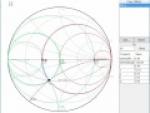rfrobenius's blog
Submitted by rfrobenius on
Smith Chart Matching HTML 5 Version
Submitted by rfrobenius on
Smith Chart Matching Web App
Submitted by rfrobenius on
Self-study Guide: RF Small-Signal Amplifiers (LNA)
Submitted by rfrobenius on
Marconi Radio Near San Francisco
Submitted by rfrobenius on
The Mother of All Demos
Submitted by rfrobenius on
Applets are Dead(?) Long Live JavaScript
Submitted by rfrobenius on
Evolving Satellite Market
Submitted by rfrobenius on
LC Resonance Plotter
Submitted by rfrobenius on
Switching Mixers Vlog
Submitted by rfrobenius on




